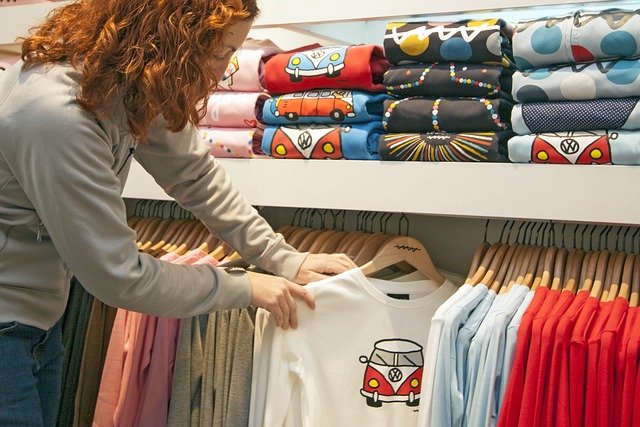Tailored Garment Printing: A Guide
In the vibrant world of fashion and personal expression, custom clothing printing stands out as a brilliant canvas for creativity. This method not only allows individuals to showcase their unique style but also offers businesses a dynamic tool for brand promotion. From T-shirts to hoodies, the realm of custom apparel printing is vast and varied, encompassing numerous techniques each with its own set of advantages. This article delves into this colorful world, exploring various printing methods, including the innovative direct-to-film (DTF) technique, to guide you through the art of personalized apparel creation.
Understanding the Basics of Custom Clothing Printing
Custom clothing printing is a process where designs, texts, and graphics are transferred onto fabric. This customization can range from simple logo imprints to complex, full-color designs that cover an entire garment. The choice of printing technique often depends on the design complexity, fabric type, durability needs, and production volume.
Direct-to-Garment (DTG) Printing: For Detailed, Colorful Designs
Direct-to-garment printing is akin to printing on paper, but instead, the printer applies ink directly onto the fabric. This method is perfect for designs that boast a wide range of colors and gradients, making it ideal for intricate artwork and photographic prints. DTG excels in creating high-resolution images on cotton or cotton-blend fabrics. Its main advantage lies in its flexibility and efficiency for small batch productions, allowing for easy customization without the need for setup fees or minimum orders.
Screen Printing: The Gold Standard for Durability and Vibrancy
Screen printing is a time-honored technique that involves pushing ink through a mesh stencil onto the fabric. Each color is applied using a different stencil, layer by layer, to create the final design. This method is renowned for its vibrant colors, durability, and cost-effectiveness for large orders. While it offers unmatched quality for simple designs with limited colors, screen printing requires a more substantial initial setup, making it less suitable for small orders or designs that require a multitude of colors.
Heat Transfer Printing: Versatile and User-Friendly
Heat transfer printing involves transferring a design onto a garment using heat and pressure. This category includes vinyl heat transfer, where designs are cut from colored vinyl and pressed onto the fabric, and digital heat transfer, where designs are printed onto special paper and then transferred to the garment. Heat transfer is exceptionally versatile, suitable for a wide range of fabrics and design types, including full-color images. It’s particularly favored for customizing names and numbers on sports jerseys and for short-run productions.
Direct-to-Film (DTF) Printing
Direct-to-Film printing is a technique that combines the best aspects of DTG and heat transfer printing. Designs are first printed onto a special film with a Prestige XL2 printer and then transferred to the fabric using adhesive and heat. DTF excels with its ability to adhere to a wide variety of fabrics, including cotton, polyester, and blends, without the need for pretreatment. Its high-quality, durable prints rival that of DTG, while offering more flexibility in fabric choices and a softer hand feel. This method is quickly gaining popularity for its efficiency and versatility, particularly for small to medium-sized runs that require high-quality, detailed designs on diverse fabric types.
Choosing the Right Printing Method
Selecting the appropriate printing technique depends on several factors:
- Design Complexity and Color Requirements: DTG is ideal for detailed, multicolored designs, while screen printing is better for simpler designs in limited colors.
- Fabric Type: DTG works best on cotton, whereas DTF can be used on a wide range of materials.
- Order Volume: Screen printing is more cost-effective for large orders, while DTG and DTF are suitable for smaller batches.
- Durability Needs: Screen printing offers the most durable prints, but DTF and DTG also provide high-quality, long-lasting results.
The Impact of Custom Clothing Printing
Custom clothing printing not only offers a medium for personal expression but also serves as a powerful marketing tool. It enables businesses to create walking advertisements, fostering brand recognition and community. Moreover, this customization fosters a deeper connection between the brand and its audience, allowing for more targeted and personal marketing strategies.
Conclusion
The realm of custom clothing printing is a dynamic and ever-evolving field, offering endless possibilities for creativity and personalization. Whether you’re an individual looking to express your unique style or a business aiming to enhance your branding, understanding the different printing techniques and their applications is crucial. From the precision and color richness of Direct-to-Garment printing to the versatility and innovation of Direct-to-Film, each method has its unique benefits. By carefully considering your design needs, fabric type, and production volume, you can select the perfect printing technique to bring your vision to life, creating custom apparel that stands out in the sea of sameness.

